Abstract
In this study we evaluated the ability of three commercial methods, API 20A (Analytab Products, Plainview, N.Y.), Minitek (BBL Microbiology Systems, Cockeysville, Md.), and Anaerobe-Tek (Flow Laboratories, Inc., McLean, Va.), to accurately identify 165 recent clinical and 38 stock isolates of anaerobic bacteria without supplemental tests or gas-liquid chromatography. Strains included 89 Bacteroides spp., 12 fusobacteria, 10 gram-positive, nonsporing rods, 43 Clostridium spp., 15 Streptococcus intermedius, 18 peptococci, 6 peptostreptococci, 3 Staphylococcus saccharolyticus, and 7 Veillonella spp. The methods used were those of manufacturers, without supplemental tests. API 20A correctly identified 70.0% of strains to species and 6.4% to genus only, with 17.2% as part of a spectrum of identifications and 6.4% incorrect. Minitek, according to the current code book, yielded 69.5% correct identifications to species, 16.8% spectrum identifications, and 13.8% incorrect. Anaerobe-Tek correctly identified 64.0% of strains to species, 21.2% spectrum identifications, and 14.8% incorrect. Thirteen strains were misidentified by API 20A, 28 were misidentified by Minitek, and 30 were misidentified by Anaerobe-Tek. For laboratories without gas-liquid chromatography support and where identification of clinically significant Bacteroides fragilis and Clostridium perfringens is desired, any of the three systems would provide accurate information. For more extensive anaerobe identification, including the less frequently isolated, more unusual organisms, API 20A and Minitek are preferred at this time. All systems have identification schemes associated with a percentage of misidentifications, the most recently introduced Anaerobe-Tek system being associated with the highest error rate.
Full text
PDF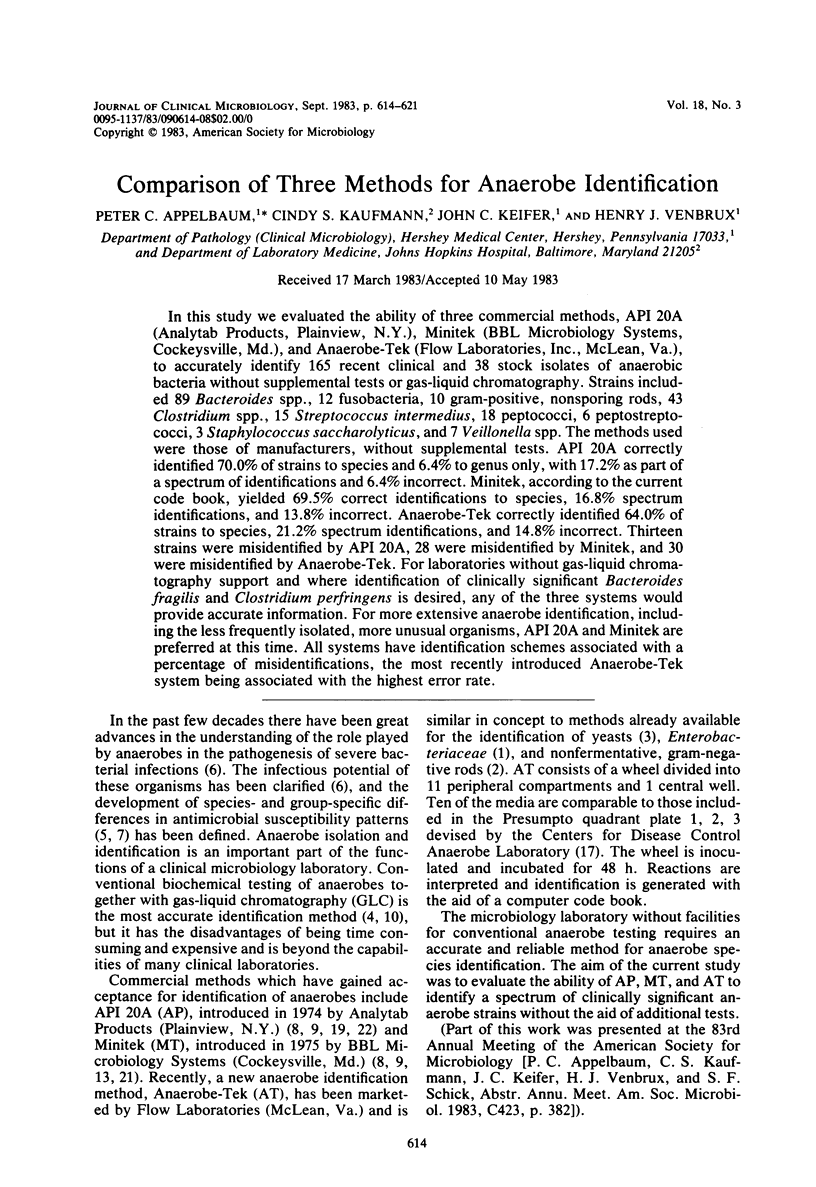
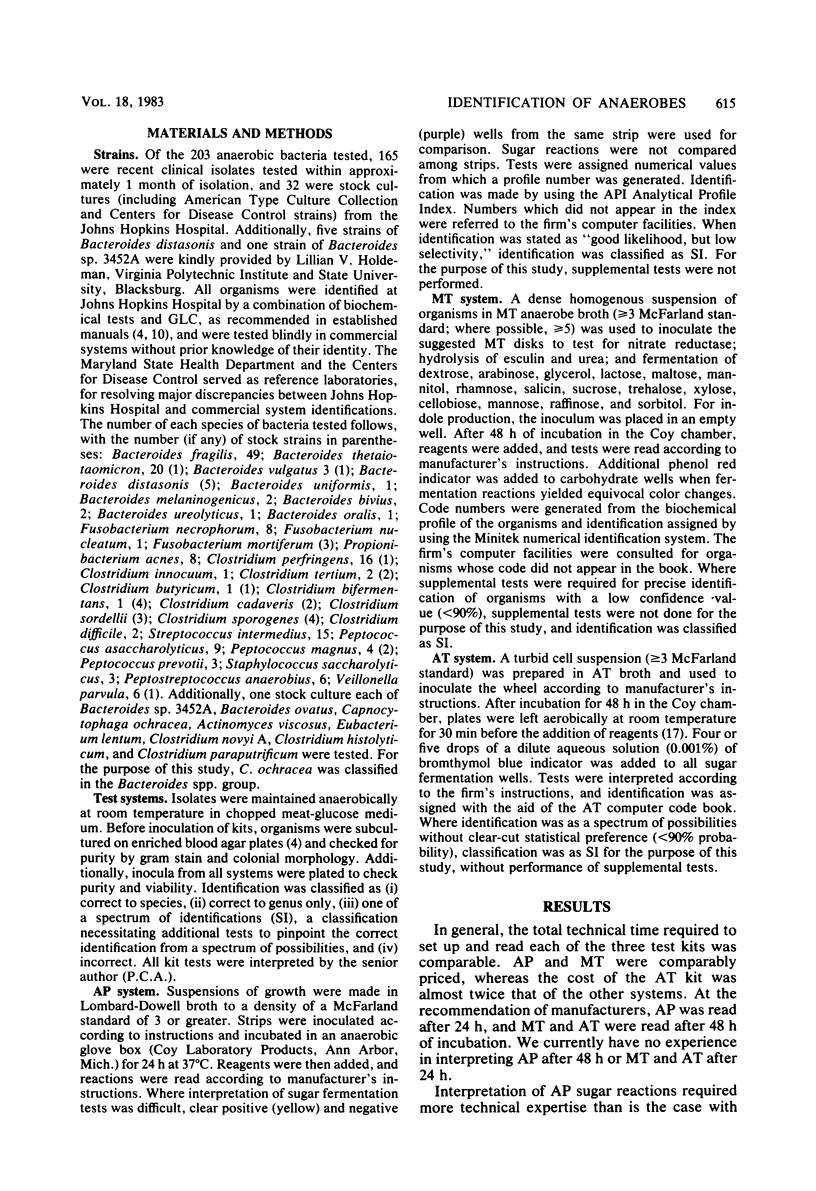
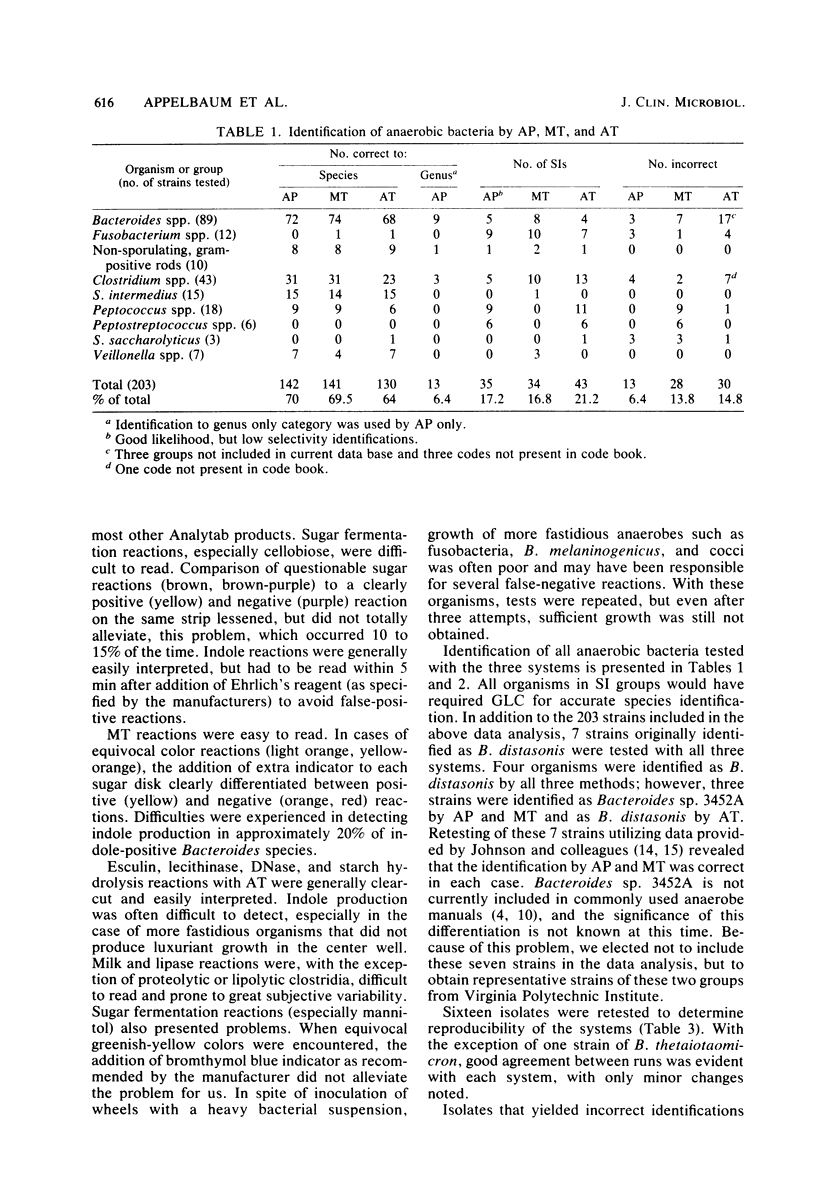
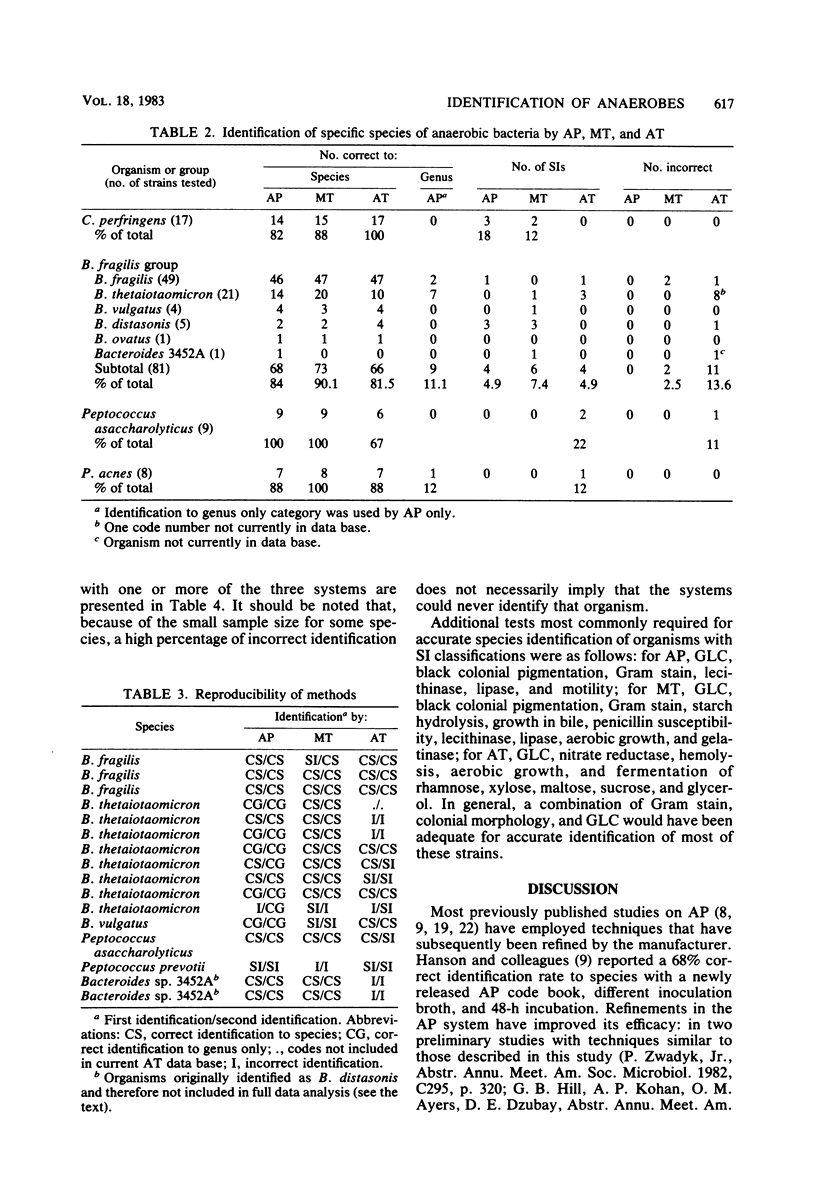
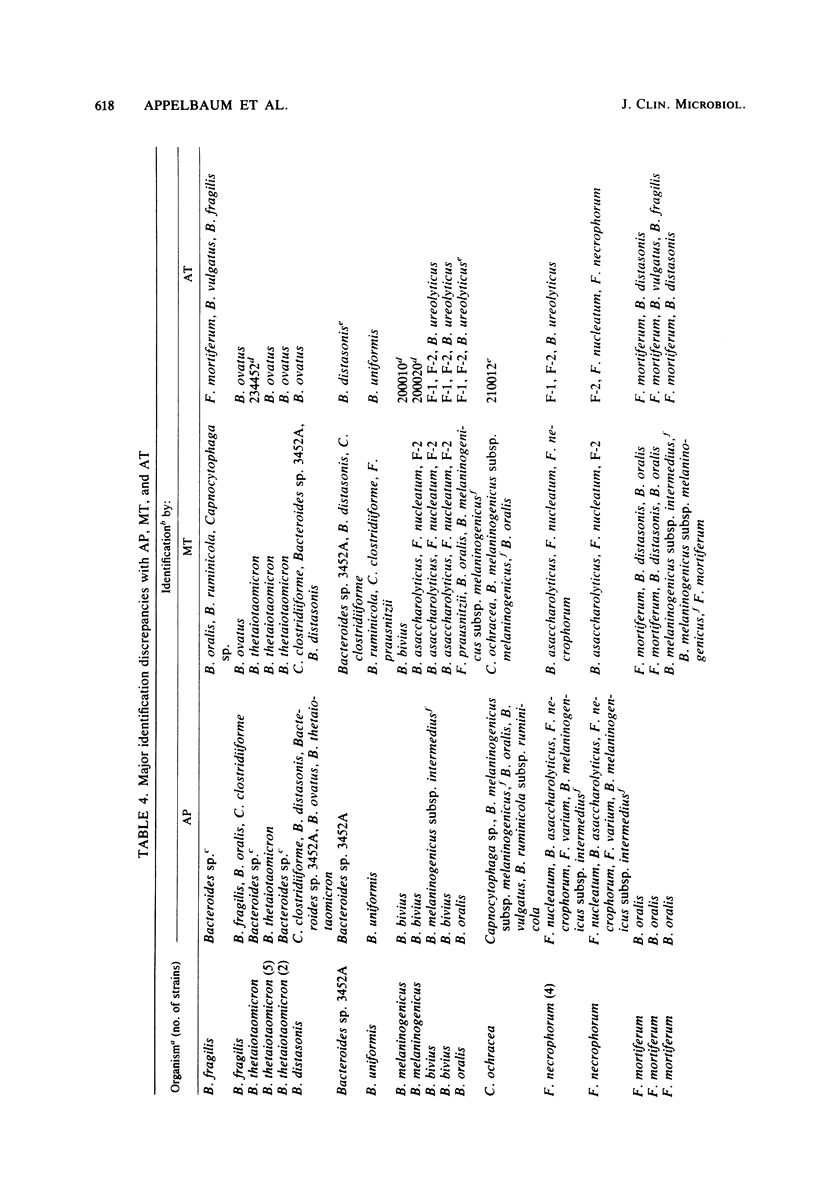
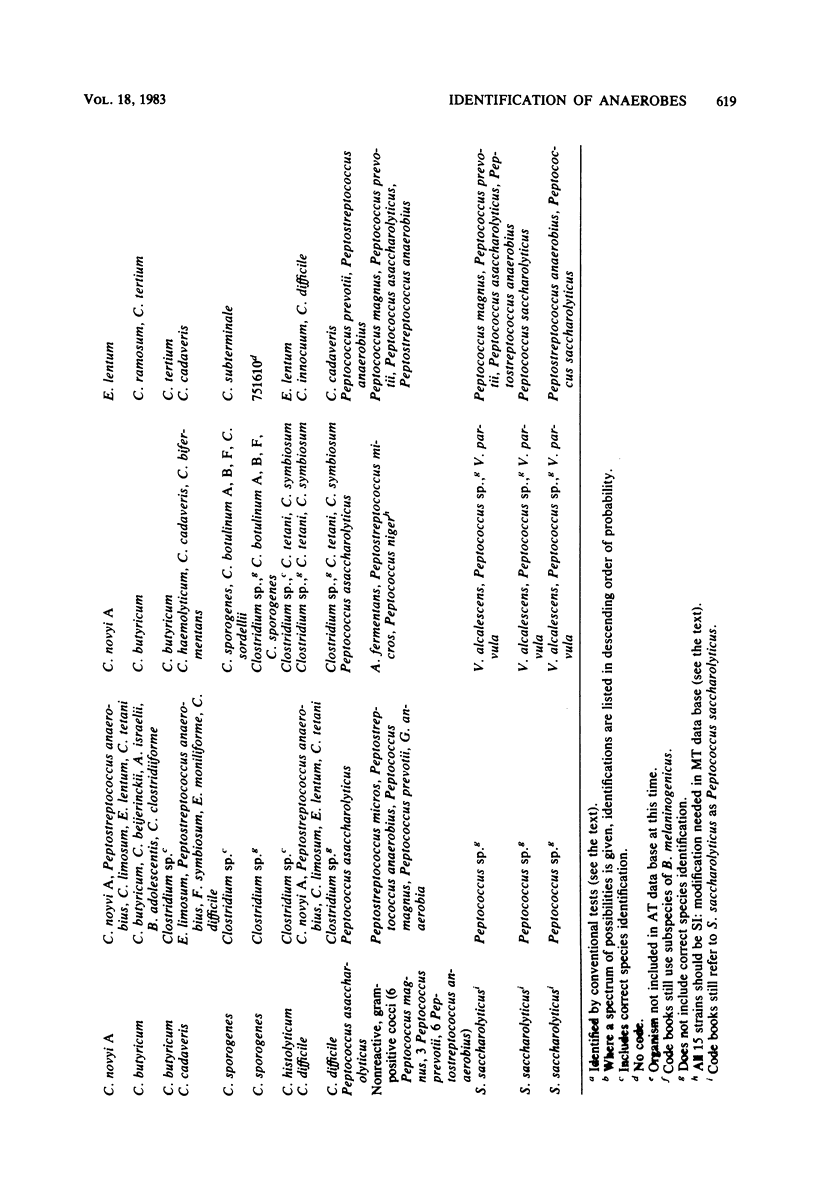
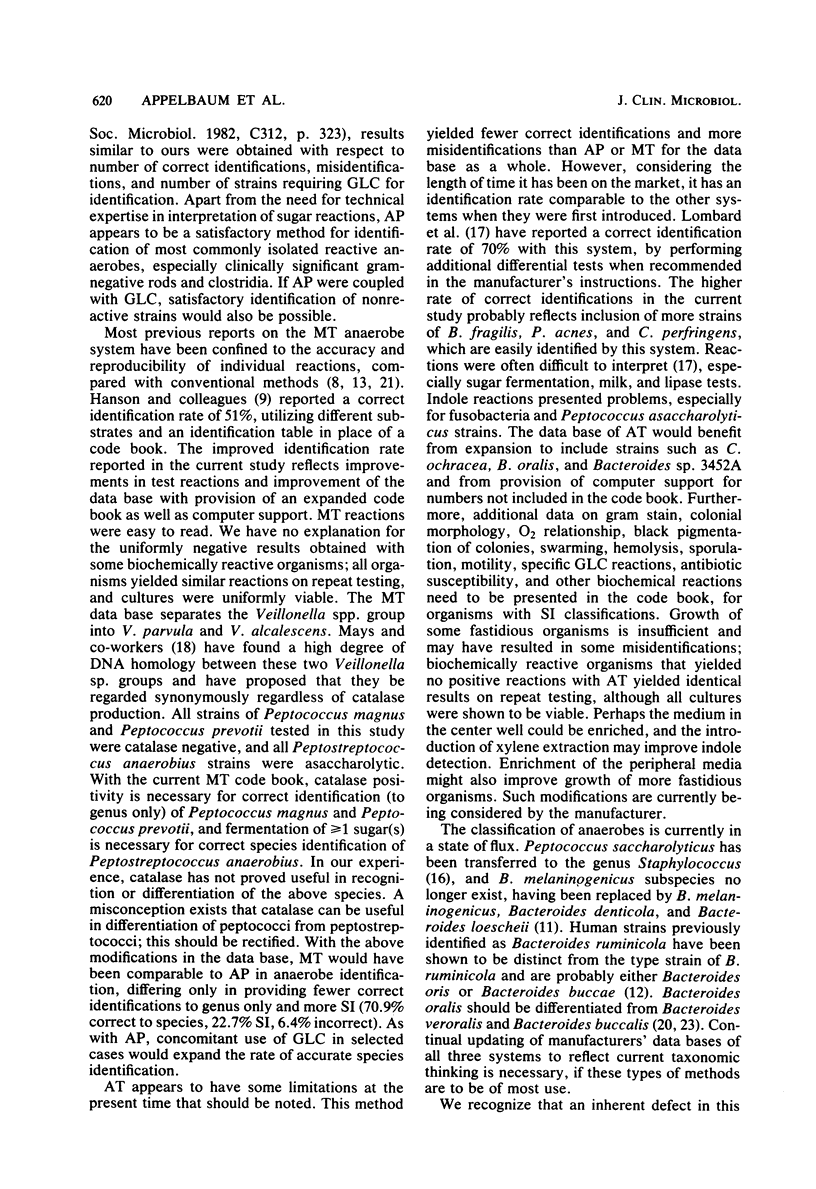
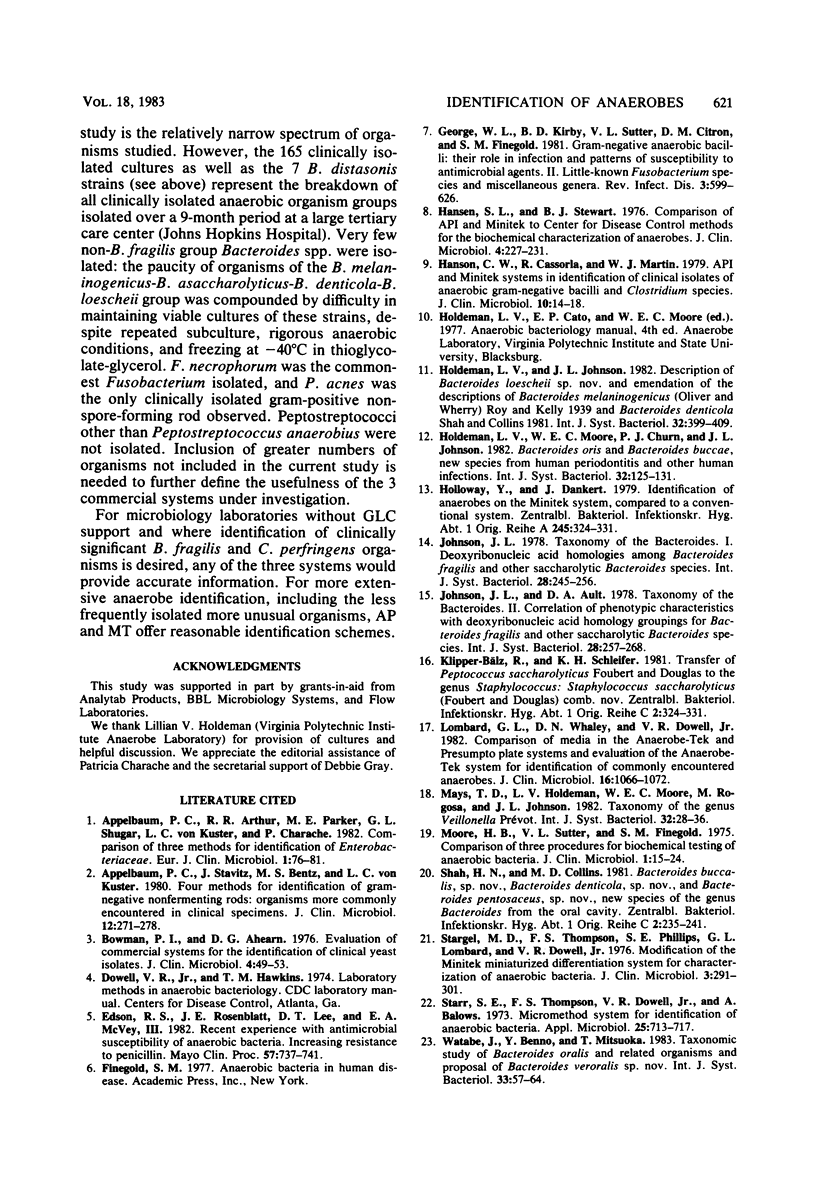
Selected References
These references are in PubMed. This may not be the complete list of references from this article.
- Appelbaum P. C., Arthur R. R., Parker M. E., Shugar G. L., von Kuster L. C., Charache P. Comparison of three methods for identification of Enterobacteriaceae. Eur J Clin Microbiol. 1982 Apr;1(2):76–81. doi: 10.1007/BF02014195. [DOI] [PubMed] [Google Scholar]
- Appelbaum P. C., Stavitz J., Bentz M. S., von Kuster L. C. Four methods for identification of gram-negative nonfermenting rods: organisms more commonly encountered in clinical specimens. J Clin Microbiol. 1980 Aug;12(2):271–278. doi: 10.1128/jcm.12.2.271-278.1980. [DOI] [PMC free article] [PubMed] [Google Scholar]
- Bowman P. I., Ahearn D. G. Evaluation of commercial systems for the identification of clinical yeast isolates. J Clin Microbiol. 1976 Jul;4(1):49–53. doi: 10.1128/jcm.4.1.49-53.1976. [DOI] [PMC free article] [PubMed] [Google Scholar]
- Edson R. S., Rosenblatt J. E., Lee D. T., McVey E. A., 3rd Recent experience with antimicrobial susceptibility of anaerobic bacteria: increasing resistance to penicillin. Mayo Clin Proc. 1982 Dec;57(12):737–741. [PubMed] [Google Scholar]
- George W. L., Kirby B. D., Sutter V. L., Citron D. M., Finegold S. M. Gram-negative anaerobic bacilli: Their role in infection and patterns of susceptibility to antimicrobial agents. II. Little-known Fusobacterium species and miscellaneous genera. Rev Infect Dis. 1981 May-Jun;3(3):599–626. doi: 10.1093/clinids/3.3.599. [DOI] [PubMed] [Google Scholar]
- Hansen S. L., Stewart B. J. Comparison of API and Minitek to Center for Disease Control methods for the biochemical characterization of anaerobes. J Clin Microbiol. 1976 Sep;4(3):227–231. doi: 10.1128/jcm.4.3.227-231.1976. [DOI] [PMC free article] [PubMed] [Google Scholar]
- Hanson C. W., Cassorla R., Martin W. J. API and Minitek systems in identification of clinical isolates of anaerobic gram-negative bacilli and Clostridium species. J Clin Microbiol. 1979 Jul;10(1):14–18. doi: 10.1128/jcm.10.1.14-18.1979. [DOI] [PMC free article] [PubMed] [Google Scholar]
- Holloway Y., Dankert J. Identification of anaerobes on the Minitek System, compared to a conventional system. Zentralbl Bakteriol Orig A. 1979;245(3):324–331. [PubMed] [Google Scholar]
- Lombard G. L., Whaley D. N., Dowell V. R., Jr Comparison of media in the Anaerobe-Tek and Presumpto plate systems and evaluation of the Anaerobe-Tek system for identification of commonly encountered anaerobes. J Clin Microbiol. 1982 Dec;16(6):1066–1072. doi: 10.1128/jcm.16.6.1066-1072.1982. [DOI] [PMC free article] [PubMed] [Google Scholar]
- Moore H. B., Sutter V. L., Finegold S. M. Comparison of three procedures for biochemical testing of anaerobic bacteria. J Clin Microbiol. 1975 Jan;1(1):15–24. doi: 10.1128/jcm.1.1.15-24.1975. [DOI] [PMC free article] [PubMed] [Google Scholar]
- Stargel D., Thompson F. S., Phillips S. E., Lombard G. L., Dowell V. R., Jr Modification of the Minitek Miniaturized Differentiation System for characterization of anaerobic bacteria. J Clin Microbiol. 1976 Mar;3(3):291–301. doi: 10.1128/jcm.3.3.291-301.1976. [DOI] [PMC free article] [PubMed] [Google Scholar]
- Starr S. E., Thompson F. S., Dowell V. R., Jr, Balows A. Micromethod system for identification of anaerobic bacteria. Appl Microbiol. 1973 May;25(5):713–717. doi: 10.1128/am.25.5.713-717.1973. [DOI] [PMC free article] [PubMed] [Google Scholar]


